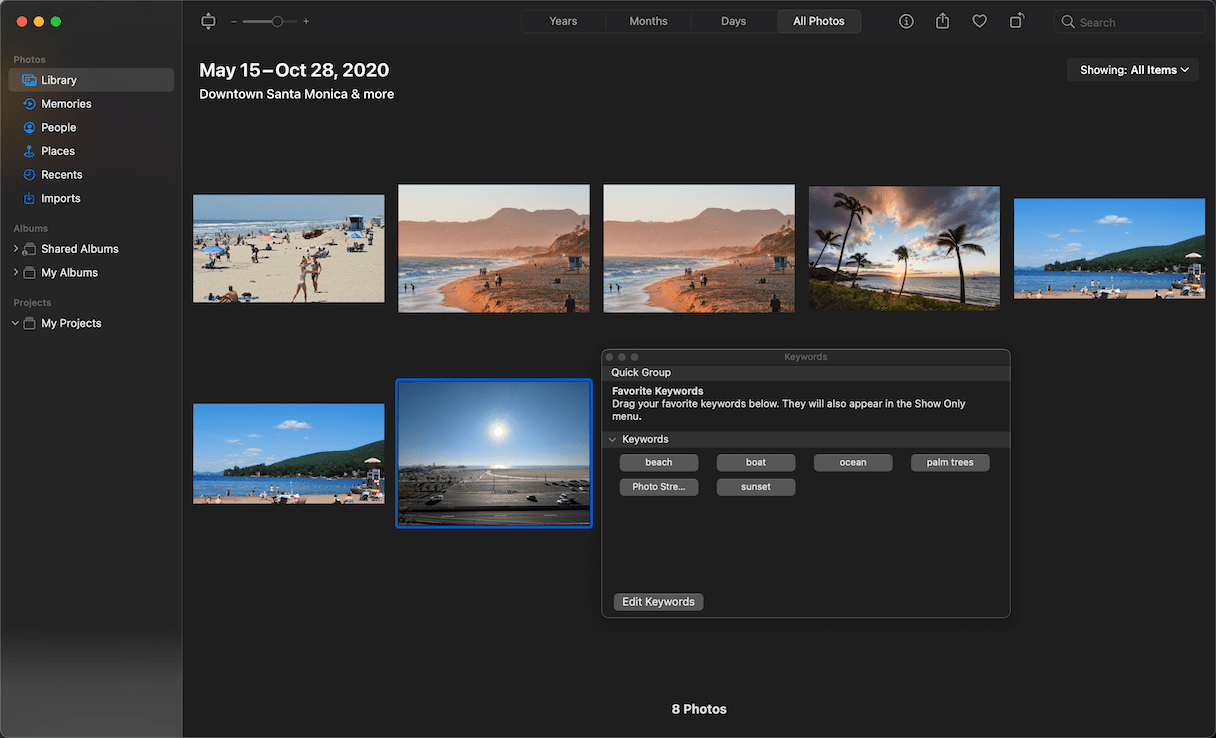

- IPHOTO LIBRARY MANAGER CAN DRAG ALL EVENTS AND ALBUMS PRO
- IPHOTO LIBRARY MANAGER CAN DRAG ALL EVENTS AND ALBUMS MAC
Aģ applicatiions, no overlap in purpose in my workflow. Opposite and that the number of applications I use are reducing. The opposite in fact.Īs regards comples arrays of disparate applications, I have found the
IPHOTO LIBRARY MANAGER CAN DRAG ALL EVENTS AND ALBUMS MAC
That iPhoto is VERY well integrated within the mac environment, and Iĭon't want to lose this. Get from these applications, and merely seek to implement iPhoto intoĪs for comments noting increased complexity, the crux of the issue is Thanks for the replies so far, and just want to note I don't planĬhange my use of Lightroom or NX.

Give me a day or two and I'll post the whole current workflow and also how/where all the stuff above integrates. The point is that they all work or integrate with iPhoto as the main storage for ALL images.
IPHOTO LIBRARY MANAGER CAN DRAG ALL EVENTS AND ALBUMS PRO
Other software I use or have tried is NX2, LR, Aperture, DxO, Bibble Pro and Expression Media. I have iPhoto at the center of my workflow and I'm doing a write up on all the details. In fact, along these lines I may add Photoshop to the workflow in the future, to give me powerful pixel adding functionality when I need it.īut back to iPhoto, I know Picasa would work perfectly as a frontend for my finished images, BUT would not give me the integration iPhoto offers with nearly all mac applications. NX just used as a converter, LR just as a DAM/ Image Editor, and hopefully iPhoto as just the frontend finished product viewer. Lightroom - File Viewer, DAM, and Image Editingģ applicatiions, no overlap in purpose in my workflow. The opposite in fact.Īs regards comples arrays of disparate applications, I have found the opposite and that the number of applications I use are reducing.

I'm quite happy with everything I get from these applications, and merely seek to implement iPhoto into this workflow.Īs for comments noting increased complexity, the crux of the issue is that iPhoto is VERY well integrated within the mac environment, and I don't want to lose this. Thanks for the replies so far, and just want to note I don't plan change my use of Lightroom or NX. I've struggled to date to understand iPhoto (learning software seems to get more difficult for me with age ) and the iPhoto material out there seems to be from the point of view of using iPhoto as a one stop shop for all your image editing, and photo management. I'm hoping to use iPhoto solely to manage the images I've processed, and resized for the web - is this possible ? Undeveloped (RAW files Waiting to be developed)ĭeveloped RAW's (RAW files that have been converted)Īll Files (Converted RAW's/ jpegs straight from camera) I'm currently expanding my workflow by utilising Capture NX as an external editor for my Nikon RAW's, and am hoping to integrate iPhoto too.Īn example of my current folder structure, and step-by-step workflow: I use and like Lightroom, and while I don't envisage using iPhoto for library management or editing, I do like the integrated-ness of iPhoto with most mac applications as well as the presentation side of iPhoto (slideshows, etc) It does this based on information it finds in the iPhoto sharing mechanism - but that means that things not shared won't be there, so no slideshows, books or calendars, for instance - but it should get all your events, albums and keywords, faces and places back.īecause this process creates an entirely new library and leaves your old one untouched, it is non-destructive, and if you're not happy with the results you can simply return to your old one.I'm looking to find out the nuts and bolts of utilising iPhoto in my current Lightroom-centric workflow. It will then copy (or try to) your photos and all the associated metadata and versions to this new Library, and arrange it as close as it can to what you had in the damaged Library. This will create an entirely new library. (In Library Manager it's the FIle -> Rebuild command) If that doesn't help, then try again, this time using Rebuild Database.ĭownload iPhoto Library Manager and use its rebuild function. Assuming the photos haven't actually been deleted, but instead some form of database corruption:īack Up and try rebuild the library: hold down the command and option (or alt) keys while launching iPhoto.


 0 kommentar(er)
0 kommentar(er)
